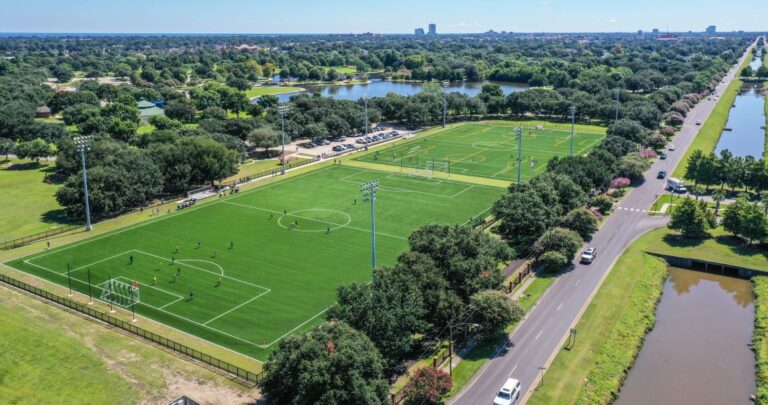By Mary Helen Sprecher
During the pandemic, when gyms and fitness facilities closed, Americans discovered the opportunities for fitness and recreation that awaited them in their local parks. These ranged from playing disc golf with the family to running or cycling on local trails to playing tennis or pickleball on courts to challenging themselves on fitness courses – and all of it was free.
Of course, the upshot was that many of those facilities received a lot more wear than they might have otherwise, necessitating more – and earlier – maintenance. Now park and recreation managers continue their essential work of running programs, but are also balancing the need to have facilities repaired, upgraded or rebuilt.
Those who are juggling all those jobs might be reaching out to contractors who are putting in bids to do work on sports facilities.
This should be a “how to” about finding a contractor, but here’s a quick “how not to.” Do not go to the internet and do a blind search to find someone to work on your parks and recreation facilities. Unfortunately, such searches can result in someone with little or no skill in the project that needs to be done.
Paul Arcella from CSR Construction Heavy & Athletic in Deerfield Beach, Florida said that when looking for a partner, be sure to ask plenty of questions.
“I think it’s important for any owner or municipality to know the background and experience of the builder,” said Arcella. “What are their credentials? Are they licensed? Do they have any certifications? Interview their customers and ask things like how they handled the projects; whether there were any changes or unforeseen conditions that caused a change in the final cost; and, if so, how was that handled?”
Sometimes, in the rush to have a project completed by the time the season for a certain sport opens, mistakes are made by not taking the time to select the right company for the job. As a result, it is possible to choose someone without the necessary experience in that sport.
According to Arcella, it is important to come to the table prepared with information, including:
- When fields, courts or other facilities need to be in use.
- Whether there is a preference in terms of the type of surface to be used.
- The sports each field/facility will host.
- What level of use the fields/facilities will receive (i.e., summertime Little League or larger and longer-term tournament use).
- What, if any, additional facilities or amenities are needed, such as spectator seating, restrooms, lighting, fencing, etc.
Builders recommend a team approach to designing and building (or rebuilding) athletic facilities. In addition to the builder, that team might include a designer of sports facilities, as well as subcontractors with expertise in areas such as electrical, lighting, etc. Also on board should be representatives of any applicable user group(s).
Contractors have long preferred creating lasting relationships with clients – not one-and-done jobs – and, as a result, have been working to forge partnerships with municipalities.
Fortunately, said John Schedler of Baraka Sport in Fort Worth, Texas, the first and most essential ingredient in creating that beneficial relationship is free.
“From concept to completion, communication is key to all projects,” he said.
When a project has a group of advisers, including community users, it is essential that all voices are listened to; however, only one person should be communicating with the contractor to avoid confusion or unapproved expenses.
“Establish a point of contact with the owner and with the designer/contractor and have regular meetings to discuss progress and issues,” said Schedler.
To keep community members in the loop, the point of contact should schedule regular meetings to give progress updates and to provide notifications on any significant changes to, or questions about, the project.
When it comes to new construction, parks and other municipalities are seeing an uptick in demand for specific types of facilities. Pickleball, of course, is growing exponentially, but so are other sports, including disc golf and half-court basketball. Dog parks are also proliferating in parks nationwide – often with different sections for small and large canines, and with amenities such as water fountains and agility courses.
“We’re seeing a major uptick in South Florida in small-sided soccer facilities,” said Arcella. “We actually replaced a skate park, an outdoor inline hockey rink and an unused baseball field, and converted all of them to small-sided soccer. With Lionel Messi now playing for Inter Miami, and the 2026 World Cup being played here, we think that trend will continue.”
Mary Helen Sprecher wrote this article on behalf of the American Sports Builders Association (ASBA). ASBA offers a wealth of resources to assist parks and recreation personnel, including publications such as “Sports Fields: A Construction and Maintenance Manual,” “Pickleball Courts: Construction & Maintenance Manual,” “Running Tracks: A Construction and Maintenance Manual,” “Tennis Courts:


